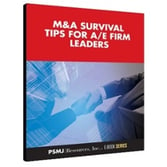In a merger & acquisition dea l, the purpose of the due diligence investigation (besides causing long nights and major stress headaches) is to make sure that both businesses are as they’ve been represented to be. It also uncovers potential problems that might be deal-breakers or issues to address in negotiating.
l, the purpose of the due diligence investigation (besides causing long nights and major stress headaches) is to make sure that both businesses are as they’ve been represented to be. It also uncovers potential problems that might be deal-breakers or issues to address in negotiating.
There are different types of due diligence—including “hard” and “soft”—but there are almost always, always small things that fall through the cracks, popping up again like insidious weeds during the most inopportune times (like contract-signing).
One of those nasty due diligence “blind spots”, as we like to call them, is backlog.
Backlog is a wholly intangible asset—the buyer cannot book the seller’s backlog as future earned revenues, yet the buyer also can’t rely on committed contracts that have yet to start.
Some may consider backlog to be “free revenue”—but it is not certain revenue. So, the real question is—what the heck do you do with it? And how do you categorize it?
To help in determining how to categorize backlog in your assessment of the seller, ask the following questions:
-
How much has the seller typically gotten from similar contracts in the past?
-
If the contractor already has a relationship with the seller, will you be able to rely on that relationship after the merger or acquisition has taken place?
-
What type of project is it—a project-in-progress, an MSA agreement, or a project that has been proposed, but not selected?
The answers to these questions will help solve the backlog riddle and will help you figure out where it goes in the bigger picture. Don’t get caught in a blind spot—ask the right questions and you’ll see clear as day.
 Looking for more tips to help your architecture or engineer firm navigate through the M&A process? PSMJ has just released a complimentary ebook M&A Survival Tips for A/E Firm Leaders.
Looking for more tips to help your architecture or engineer firm navigate through the M&A process? PSMJ has just released a complimentary ebook M&A Survival Tips for A/E Firm Leaders.
You also might be interested in the M&A related posts.
Expert Interview: Assessing Current M&A Market Conditons and Trends
How prepared are A/E firm leaders to undertake M&A?
M&A Insider: Five Ways to Make Your Next Deal a Flop
M&A Insider: The Pitfalls of Buyer Stock as a Transaction Currency



